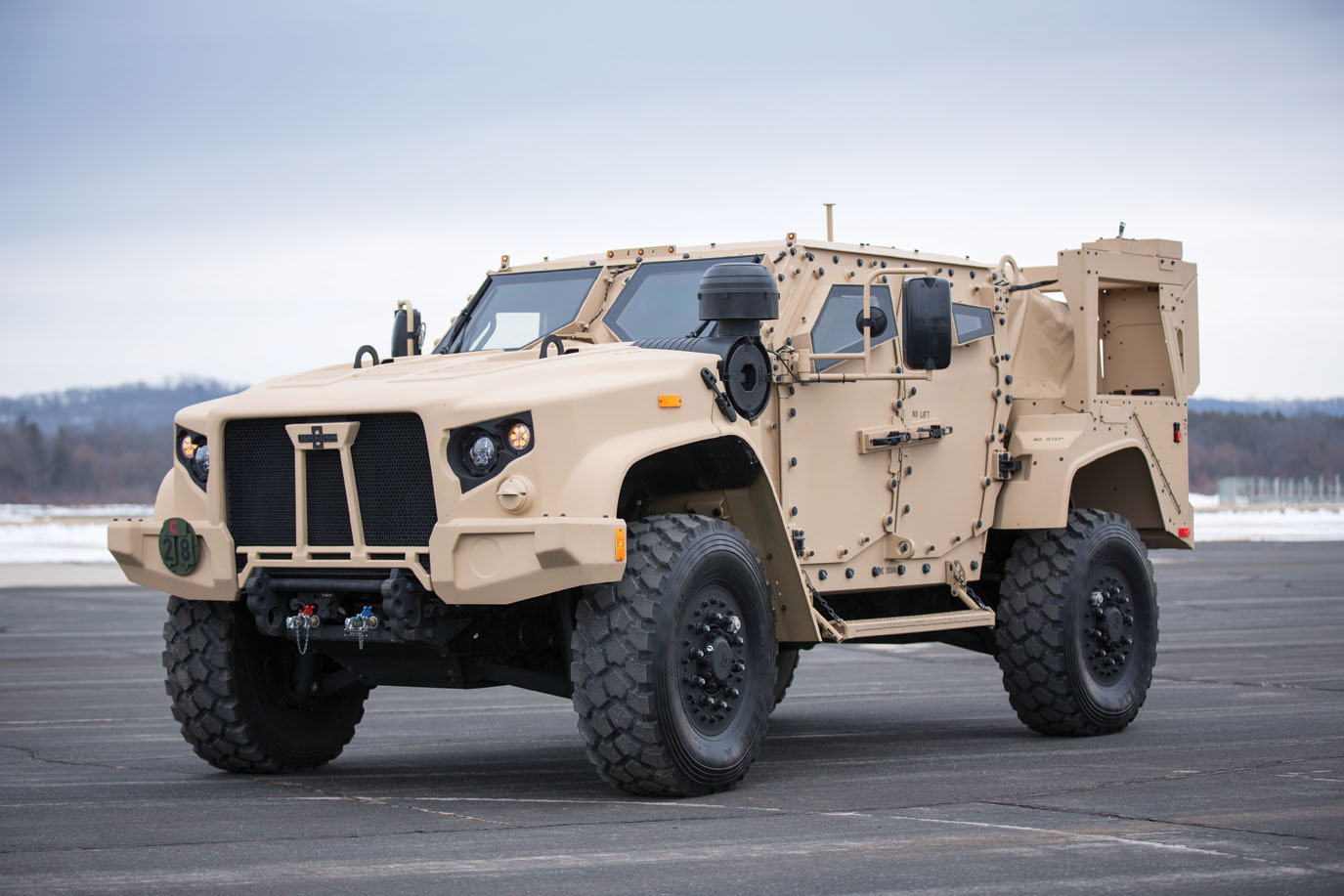
– By John Haystead –
In January, the US Army, through the Program Manager (PM) Electronic Warfare (EW) and Cyber, held an industry day for the “SIGINT & EW Future Opportunities and Terrestrial Layer System (TLS).” The TLS is described as “an integrated ground intelligence, electronic warfare, and cyberspace capability for Brigade Combat Teams and Military Intelligence.”
COL Kevin E. Finch, Project Manager, Electronic Warfare & Cyber, opened the discussion with some historical context surrounding the current requirement, noting that the original vision for the precursor to the TLS – the Multifunction Electronic Warfare (MFEW) concept – called for an “Army-organic EW system-of-systems consisting of ground and airborne assets that provide offensive/defensive electronic attack (EA) and electronic support (ES).” A Materiel Development Decision (MDD) for MFEW was released in 2011 and an Analysis of Alternatives (AOA) in 2013. The airborne portion of MFEW is MFEW Air – a family of EW payloads that will provide Brigade Combat Teams with organic electronic warfare support, electronic attack, and offensive cyber capabilities. MFEW-Air Large reached Milestone B in 2018 and is now under development by Lockheed Martin. (See related article below.)
According to Colonel Finch’s briefing at the TLS industry day, over the past few years, a number of factors came together to alter the plans for MFEW and shift toward the TLS approach including: urgent requirements from USAREUR and other commands together with a new National Defense Strategy and peer threat assessment; a convergence of EW, SIGINT, cyber and space; availability of National assets and advanced software capabilities; and approval for rapid EW force-structure growth. In addition, he pointed out that, with the new TLS approach, “air/ground integration is no longer at a system-of-systems level, but at the data management, processing, and control level – EWPMT (EW Planning and Management Tool).” His presentation also stated, “Speed-to-delivery [is]now critical, [with]system commonality [becoming]less important.” He also emphasized that the TLS architecture must leverage National assets, and it must abstract hardware from software for rapid adaptability to pace the threat.
In his presentation at the TLS industry day, MG Kirk F. Vollmecke, Program Executive Office Intelligence, EW & Sensors (PEO IEW&S), pointed to several initial design tenets for TLS, such as that it be “expeditionary,” with a platform based on the supported maneuver unit. It must also be “modular,” implementing an open architecture that enables future growth to pace the threat. It must have a “defined software framework,” allowing for rapid integration of signal “libraries” instead of costly and time consuming integration of individual signals. It must be “automated,” with machine learning for improved CEMA (Cyber-Electromagnetic Activities) responsiveness and reduced soldier workload; and it must be “rapid and agile” with early capability with multiple learning events and product improvements.
Speed is also clearly of the essence in the TLS development and acquisition strategy, which calls for a very rapid and parallel prototyping, production and fielding timeline. The “software-driven compute” environment and user interface development (B-Kit) will begin this year and continue throughout the program. At the same time, rapid prototyping and RF component development (C-Kit) are planned to begin in early FY2020, with rapid production and fielding beginning in FY2022. The rapid prototyping acquisition strategy will utilize Mid-Tier Acquisition (Section 804) authorities, with competitive prototyping in FY2020 planned to support a production decision as early as FY2021.
According to Vollmecke’s presentation, “open, adaptable programs combating complexity” will be key to the TLS acquisition timeline, which will include leveraging commercial offerings; an agile acquisition process focused on small, frequent releases of capability; small, qualified, dynamic development and acquisition teams; and early and frequent involvement with system users.
LTC Scott Bailey, Product Manager “Prophet,” and Ms. Abigail Jordan, Contracting Officer Army Contracting Command – APG, presented on the TLS program from the perspective of its “Acquisition and Contract Vision.” The “Vision,” according to their presentation, is driven by the 2018 National Defense Strategy (NDS) coupled with combatant commanders’ missions and priorities, rapidly changing technology, an adaptive enemy, and the need to outpace the threat.
The TLS acquisition schedule calls for white papers to be reviewed and selected and a Statement of Work procurement package sent to Army Contracting Command (ACC) in the third quarter of FY2019. This will be followed by a Request for Proposals (RFP) released to members of the Consortium for Command, Control and Communications in Cyberspace (C5) in the fourth quarter of FY2019. Multiple Other Transaction Authorities (OTA)/Project Awards are scheduled for the first quarter of FY2020, with the initiation of a second round of OTA white paper requests in the second quarter.

The RF Components Development, or “C-Kit” effort is aimed at providing an integrated set of sub-systems that are tailored for specific unit/platform and operational environment (target) mixes. Overall, the goal is to develop a process to mature sub-systems, but the initial focus is on a complete C-Kit package for a Joint Light Tactical Vehicle (JLTV) platform. The process is expected to run approximately 24 months per cycle from the call for white papers in May of FY2019 through lab demonstration, to open-air demonstration (Tier 2), to platform integration with feedback loop. “Successful” Tier 2 solutions will become qualified source/directed solutions for the next TLS integration and two-year production cycle. C-Kit OTA awards are planned for November, 2019.
The A-Kit effort will integrate B and C-Kit elements onto Government Furnished Equipment (GFE) platforms and communications packages. Fixed Price Indefinite Delivery/Indefinite Quantity (ID/IQ) orders will cover the procurement of qualified components and the building, fielding, training and sustainment of systems based on targeted platforms. Production quantities will range from 50 to 100 units, with three Engineering Manufacturing Development (EMD) systems planned for FY21. A single A-Kit integration and production contract estimated at $150-$500 million will be awarded with a planned solicitation release date in the third quarter of FY2020. The Period of Performance will be from first quarter FY2021 to fourth quarter FY2028.
PEO IEW&S is planning follow up sessions with industry in conjunction with an Advanced Planning Briefing to Industry (APBI) scheduled for April 29 – May 3, 2019, at Aberdeen Proving Ground, MD. ♦
If you enjoyed this article, please share. If you would like to read more articles like this one, we encourage you to join the AOC to receive a copy of JED every month.


